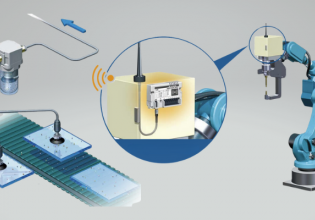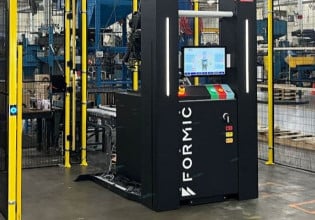3D-Printed Diffusers Designed to Help Hospitals Treat Patients With COVID-19
Texas A&M University uses 3D-printing technology to design diffusers for metered-dose inhalers used to treat patients with COVID-19 at Houston Methodist Hospital.
Collaborative efforts between industrial engineering professionals and front-liners among healthcare battalions holding off COVID-19 are generating solutions for previously unanticipated needs. Recently, a unique Engineering Medicine (EnMed) partnership was struck up between Texas A&M University and Houston Methodist Hospital.
The EnMed Program
The EnMed program is an integrated educational and research program dedicated to innovation. Texas A&M University has already delivered 200 3D-printed spacer/diffusers for metered-dose inhalers (MDI) to the Houston hospital and is priming itself to provide future supplies should the need arise.

Texas A&M University 3D-printed diffusers. Image used courtesy of Texas A&M University.
The team behind the creation of these diffusers is being led by Dr. Michael R. Moreno, assistant professor in the J. Mike Walker ‘66 Department of Mechanical Engineering and director of innovation for EnMed.
Moreno and co’s diffusers will enable doctors to use metered-dose inhalers (MDIs) to treat patients both diagnosed with and suspected of having COVID-19 who do not yet require ventilator therapy. If this all-important early-stage intervention is effective, then patients may recover before the critical point at which they need ventilator therapy. This frees up ventilators for use by other patients that are seriously affected by the virus.
Utilizing Ventilators and Other Medical Devices
Nebulizers are usually used in combination with bronchodilator drugs to individuals with asthma and can also be used for patients with COVID-19. The issue with using this device is that it could aerosolize the virus. This places patients within the immediate vicinity of severely affected COVID positive patients at high risk of infection.
In a typical healthcare setting, respiratory inhalers are one of the first devices used to deliver medicine and help treat patients with the virus. One of the downsides of using inhalers is that even experienced users can find them challenging when defining the precise time of inhalation to properly deliver drugs to the lungs.
Diffusers That Fit Into Inhaler
Moreno’s diffusers will enable patients to get more medication into their lungs in a more precise manner while reducing the risk of viral particles being released into the surrounding area.
The spacer or diffuser, which fits onto the inhaler device, allows "the patient more time to draw the entire dose of medication into their lungs” Moreno said. “And when you’re suffering from respiratory illness, this may be very important,” added Moreno.
Moreno understands that it is not only Houston hospital that faces a short supply of respiratory devices, which is why Moreno and his team have made their 3D-printed diffuser designs freely available on their EnMed website.
"People will be able to go to the site, download those STL files and then print these spacers for their local hospitals as well if they find that they have need for it,” said Moreno. Although 3D-printing of diffusers is not a novelty, this is the first instance where they are being 3D-printed locally and delivered on a larger scale.

Stereolithography (STL) file for the 3D-printable design of spacer/diffuser. Image used courtesy of Texas A&M University.
This concerted effort between Texas A&M University and Houston Hospital is a lighthouse of reassurance and emboldening gesture of what a compassionate collaborative community can achieve together in a state of crisis.
Have you seen diffusers like this one before? What is your company doing to help COVID-19 relief efforts?






